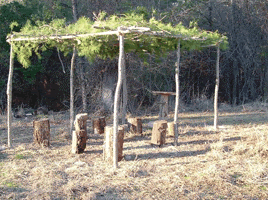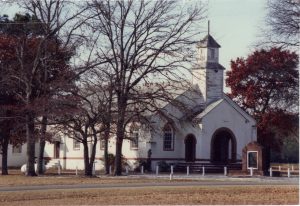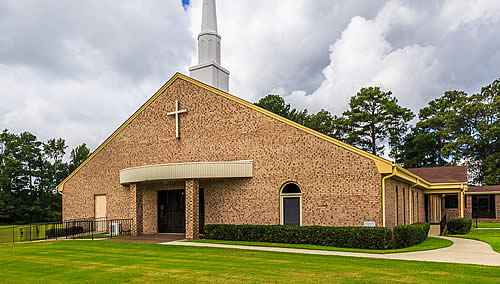|
The vision of Mount Pisgah was birthed in the heart of Reverend Anderson McNeill, the pastor who founded the church, approximately 116 years ago. God spoke to Reverend Anderson McNeill and told him where to plant the church and then revealed to him the name, Mount Pisgah. What is so significant about that name? It was from the Mount Pisgah Mountain Range near Sinai that Moses stood upon the mountain top and looked across into the Promised Land. God gave a promise and a vision to Moses and the children of Israel that the land would be theirs, the inheritance for the seed of Abraham. Just as he ordained and fulfilled the Promised Land, God did the same fore Reverend McNeill. When Reverend McNeill viewed the spot for Mount Pisgah, it was a vast wilderness of pine and oak trees and a future of back breaking hard work to clear the land and raise money to eventually build a sanctuary. God always provide. The numerous pine trees became the source for providing money and lumber, but is still was not easy. This was the turn of the century, following the Civil War where the Ku Klux Klan terrorized the newly freed Blacks and former slaves. Preachers especially were targets of hatred and violence. Some churches, such as Galatia allowed Blacks to worship in their balconies or sit outside windows to hear the Gospel. When visionaries such as Reverend McNeill dared to preach and teach themselves, they put their lives and their families in danger. Just like the newly formed Church of the First Century which was officially birther at Pentecost, Reverend McNeill and others often faced persecution, threats and even death. In the First Century Christians were crucified, tortured and thrown to lions for sport and entertainment: yet they kept the faith and persisted. Reverend McNeill and other did not let the KKK, terrorist groups, or vigilante groups stop God’s program. During that time few Black churches existed and like in the early days they met in homes, barns, down by the river banks or anywhere they could to worship God. Many ministers were circuit preachers traveling from community to community to preach and very often many of these ministers were found dead along the circuit path.
God desired more for his people than sitting in balconies or 1-2 months before a preacher would arrive in town. God gave Anderson McNeill the vision and the resources for establishing Mount Pisgah. Historically it was first a Brush Arbor with a crude covering of trees, limbs and chicken wire but still a place to worship. Eventually money made from the selling of pine tar, Liquid Gold and turpentine he and his family was able to build the first wooden church structure. Over the years the wood cabin type structure became a clap board, a wooden structure that was rebuilt several times and had actually been burned down twice in the churches history. But from its beginning, Mount Pisgah served as the center of the community for miles around and was the place where the Black community met to discuss critical issues, such as petitioning the county/state to levy taxes upon them in order to build a school for Black children, which became the White Oak School. The school sat across the street from the sanctuary where presently the cemetery resides. Together these two entities Mount Pisgah and White Oak School were the strongholds of the whole community. Mount Pisgah was where all the Blacks came to worship, have weddings, funerals, political discussions and baptisms at the Puppy Creek Mill. The history of Mount Pisgah is interwoven into the fabric and existence of this community. Its more than a Name; Its More than a Church building, it is a Ministry ordained by God and birthed into the heart and sprit of his chosen vessel Reverend Anderson McNeill. God gave him the vision, wisdom, resources, strength and courage through his faith.
|
From Brush Arbor 1900… (depiction)
 |
| Mount Pisgah 1956 |
 |
Mount Pisgah Today |
|

